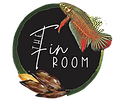Common name: Southern purple-spotted gudgeon
Scientific name: Mogurnda adspersa
Origin: Australia, in the river systems of New South Wales and Queensland, and tributaries of the Darling. This fish is becoming rare and has only been found in NSW once in the past 20 years. Western populations are classed as endangered and wild fish and their habitats are protected.
Size: Up to 15cm/6", but usually a bit smaller in the aquarium.
Habitat: Found in slow-moving rivers and still backwaters and creeks, usually among fallen branches, aquatic plants and rocks.
Water: pH around 7.0; 15-25C/59-77F, GH 10-20.
Aquarium: A tank of 60cm/24" or so is fine for a pair for a breeding project. Furnish with plenty of bogwood, rocks and robust plants. It can be a little territorial and has the potential to eat some very small tankmates.
Diet: Wild fish feed on worms, insect larvae, plants and small fishes, but captive fishes will accept most frozen and, sometimes, dried foods. Mogurnda are often bold feeders and will take frozen food from your fingers.
Breeding: This species matures at about 5cm/2" and forms a pair bond. The male displays to the female by circling and gill-flaring in an elaborate courtship ritual lasting several days. The female usually lays a clutch of eggs on a stone or piece of wood, often near plants. The male guards the brood and will often chase the female away. She may need to be removed if she is being harassed. The 2-3.8mm eggs hatch in 3-8 days. These are attached at the base (rather like those of clownfishes). Fry feed on zooplankton, but can be fed on liquid or powdered fry foods in the aquarium. Spawns several times a year, usually in the morning and when the water temperature is relatively high (27C/80F). Broods usually fairly small - around 20-40 fish.
Sexing: The male may have a slight nuchal hump. The ovipositor of the female is pale and blunt, while the male has a long, brightly coloured genital papilla which curves backwards and points downwards. Males become more colourful when spawning.
Notes: There are around
25 other species of Mogurnda, but only this species and the Northern purple-spotted gudgeon, M. mogurnda, are available in the trade. M. adspersa is rarely offered for sale.
Identification: This species has fewer scales in the lateral series than M. mogurnda (30-36 in M. adspersa, compared to 37-46 in M. mogurnda). Red spots are present in the middle and upper parts of the second dorsal fin in adspersa. In M. mogurnda the second dorsal has fewer, larger red spots, confined to the bottom of the fin.
top of page

The Fin Room
Specialist Trader & Dealer Of Aquaria

Company Reg SC758673
£7.99Price
Out of Stock
Related Products
bottom of page

















